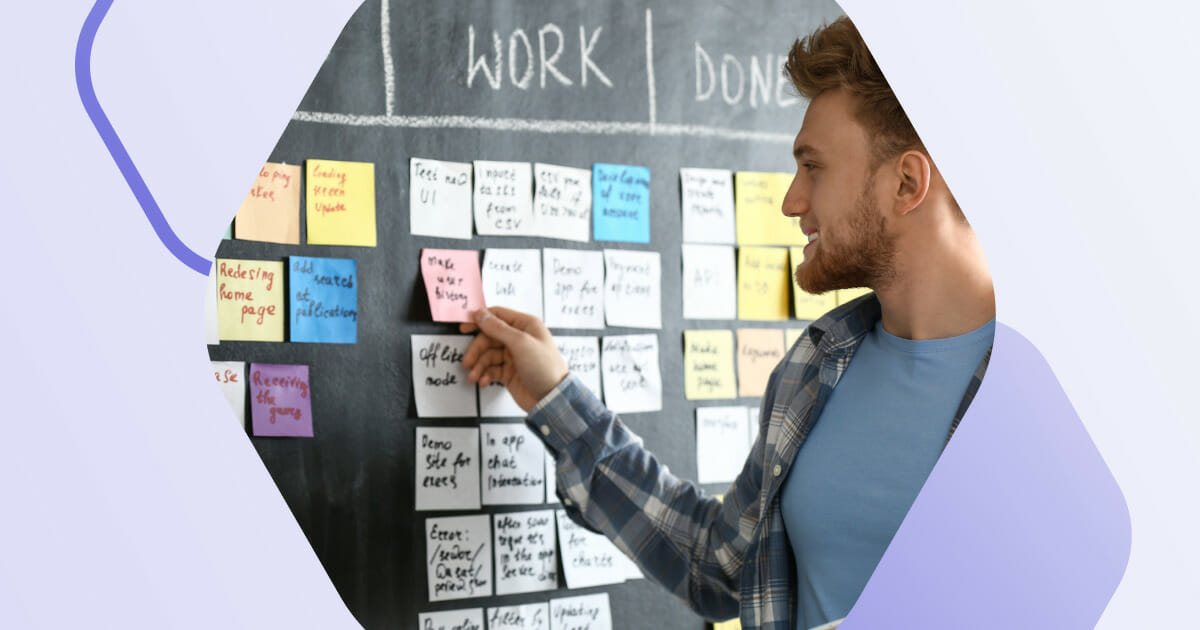Efficiency is more than just a buzzword—it’s a necessity. Enter Lean Payroll, an innovative approach that borrows principles from the manufacturing sector to transform how payroll team’s function.
This transformative method not only streamlines processes but also addresses the very payroll challenges that have plagued organisations for years. So, what exactly is Lean Payroll? And how do you implement Lean practices?
First, what is Lean Payroll?
Lean Payroll is a method of managing your organisation’s payroll processes to make them more efficient and less wasteful. It draws inspiration from Lean manufacturing principles which aim to streamline production processes.
In essence, Lean Payroll involves evenly distributing payroll tasks throughout the month to avoid payroll bottlenecks and reduce stress. It also focuses on minimising errors and unnecessary steps in the payroll process, thereby saving time and resources.
The ultimate goal of Lean Payroll is to turn your payroll department from a cost centre into a strategic asset that can boost productivity, improve accuracy, and contribute to overall business success.
Practical steps for implementing Lean Payroll
Understanding your current position
To implement any change effectively, you first need a comprehensive grasp of your current procedures and practices. You can start this by:
- Mapping your process: Start by detailing each stage of your existing payroll processes. This doesn’t require sophisticated diagrams at this stage. A simple list or written outline can reveal the complexity and potential inefficiencies in your current process.
- Engaging with your team: Meet with members of your payroll team to gather their perspectives to gain a clearer picture of the challenges they face and the elements of the process they find efficient or problematic. This feedback is crucial in identifying areas that require improvement and those that already function well.
Gaining clarity through visualisation
After understanding your current process, visual tools can help to provide a clearer and more organised perspective. To truly visualise your current processes, you can:
- Use digital tools: Tools such as Trello aren’t limited to project management. Use them to graphically depict each step in your payroll process, highlighting complex or cumbersome areas.
- Embrace flowcharts: Create a flowchart to capture the entire payroll journey – from its beginning, through every step, to its conclusion. This visual guide can efficiently point out potential challenges and areas requiring attention.
Identifying and overcoming challenges
A clear visual representation of your payroll process doesn’t just offer clarity—it lights up areas that need attention. Armed with your new payroll visuals, you can then analyse them to:
- Identify the bottlenecks: Before finding a solution, it’s key to understand where the problem actually lies. Keep an eye out for steps where hold-ups consistently happen—most likely in the payroll bottleneck. Are delays stemming from data entry procedures or from waiting for multiple levels of approvals? By focusing on these specific issues, you’re better equipped to address them.
- Remove unnecessary processes: Once you’ve identified your roadblocks, you can look at removing them. Find tasks that might be repeating themselves without adding value. These can be hidden time-consumers. Eradicating or combining these repetitive tasks can not only make your process more efficient but can also reduce the chances of errors cropping up from redundant operations.
Refining the approval process
Approval processes can be complicated and winding in numerous businesses. It’s time to make it more straightforward. To get started refining your approval processes, you can:
- Identify necessary and unnecessary approvals: Instead of having multiple levels of validation, consider trimming them. If you’ve been having four stages of checks, is it possible to accomplish the same accuracy with only two? Offering your team this trust to make decisions without multiple levels of approval can fast-track the entire procedure.
- Give managers more control: Allow your managers to make decisions without always needing green lights from higher-level executives. When managers have this freedom and responsibility, it often results in swifter, more efficient outcomes.
Trial and feedback
Change is often most effective when it’s gradual. Start with a smaller scope before implementing on a grand scale. Trial and feedback work well when you:
- Start small: Begin your Lean Payroll transformation in just one department or location. This approach allows you to observe the new process’s effectiveness and pinpoint areas of improvement without causing disruptions across the board.
- Welcome opinions: Always keep communication lines open. Urge your team members to share their firsthand experiences and thoughts about the changes. Their feedback provides essential insights to help fine-tune the system for better efficiency and satisfaction.
Setting a standard
Having refined the rough edges of your payroll system, the next crucial step is to solidify these changes into everyday practice. Here are two key activities to run with to help embed your new standard:
- Create detailed documentation: It’s vital to capture every aspect of the new process in a comprehensive guide. Not only does it direct everyone towards the correct procedure, but it also offers a safety net. If there’s ever any doubt or confusion, employees have a reliable source to reference. This reduces errors and ensures the continuation of best practices.
- Offer training: Beyond just introducing the revised methods, take the time to delve deep into its intricacies during training sessions. Encourage questions, foster discussions, and provide examples. Every team member should not only know the “how” but also understand the “why” behind each step. This deeper understanding fosters commitment and ensures smoother execution in the long run.
Monitoring and continuous improvement
Embracing Lean Payroll isn’t a one-time event; it’s an ongoing commitment to transforming traditional payroll processes. To make sure you’re staying ahead of the curve, you need to:
- Utilise data-driven insights: Tracking and evaluating is essential. By routinely measuring the time tasks take or gauging the accuracy of processes, and comparing them with historical data, you get a clear picture of improvements. It becomes evident where the new procedures shine and offers a quantitative testament to the positive changes brought about.
- Stay agile: In the world of payroll, there’s always room for growth. Maintain a receptive attitude to feedback, whether from team members executing the tasks or from broader organizational perspectives. This openness not only keeps your process in check but often leads to discovering newer, more efficient ways of accomplishing tasks.
- Commit to continuous improvement: Recognise that the path to Lean Payroll is iterative. As technologies evolve, as team dynamics shift, and as organisational goals change, the payroll process should fluidly adapt to continue delivering optimal results. Embracing change and seeking continuous improvement ensures your Lean Payroll remains relevant and efficient.
The journey to Lean Payroll
Lean Payroll is more than just a method—it’s a mindset shift towards efficiency and continual improvement in payroll processes. By understanding, visualising, and refining our practices, we can create a more streamlined, accurate, and empowering system that benefits everyone involved
For more information on Lean Payroll practices, download our guide below. Or get in touch if you’d like to chat about what we can do to help.

Introducing Lean Payroll
Walk through the entire concept with PSSG CTO, Seb Aspland—the mind behind Lean Payroll—covering everything from its roots up to a step-by-step guide for implementation
Download your Lean Payroll ultimate guide


